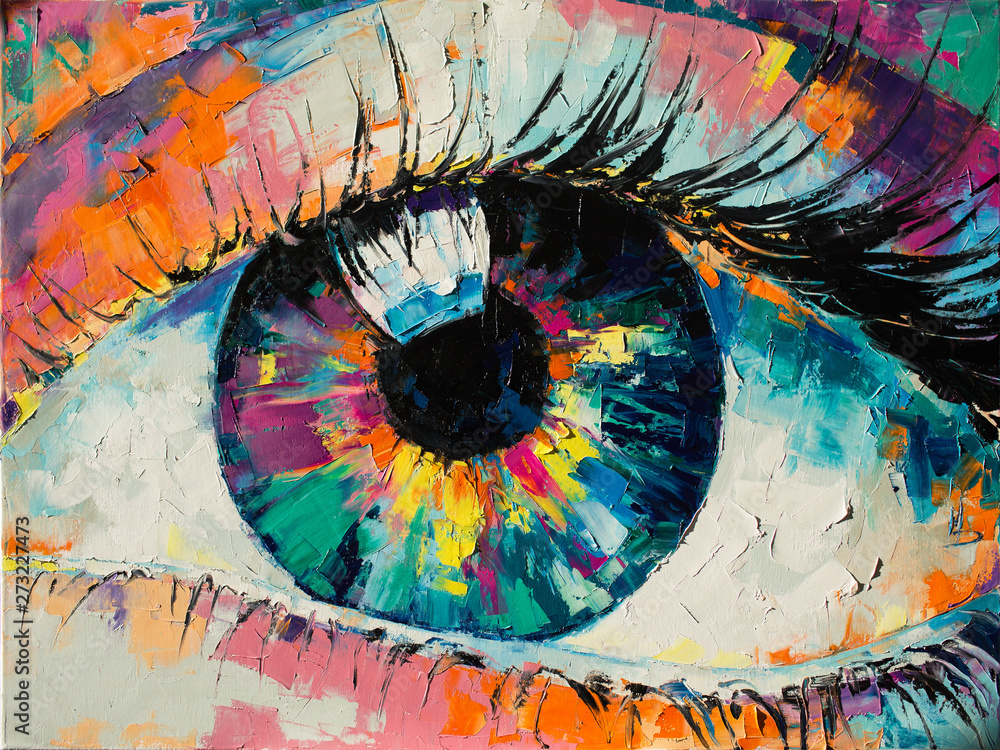Exploring Everything About Oil Paintings: An Overview to Understanding Their Beauty and Worth
Oil paints have captivated audiences for centuries, supplying a glance into the imaginative proficiency of various eras. Their abundant background is linked with ingenious methods and profound psychological expression. Understanding the products and techniques behind these artworks can enhance appreciation. In addition, the marketplace for oil paintings presents possibilities for investors and enthusiasts alike. As one discovers this fascinating globe, the inquiry develops: what makes an oil painting truly useful?
The History of Oil Painting: A Trip Through Time
Although oil paint has roots that date back to old times, it really thrived throughout the Renaissance, when artists uncovered its flexibility and abundant shade possibility. Early examples can be mapped to the 7th century, with strategies progressing notably throughout cultures. The tool ended up being prominent in Northern Europe in the 15th century, especially through the jobs of artists like Jan van Eyck, that pioneered its use for detailed realistic look and dynamic tones. This period noted a departure from tempera paints, enabling higher depth and appearance. As oil paint spread, it influenced countless musicians, bring about masterpieces by distinguished figures such as Leonardo da Vinci and Rembrandt. The tool's legacy continues, forming the art world well into contemporary times.
Recognizing Oil Paints: Products and Techniques
As musicians explore the globe of oil paints, they encounter a varied range of products and techniques that define this medium. The primary parts of oil paint consist of pigments, which provide color, and drying out oils, such as linseed, that bind the pigments and promote application. Various additives can change the paint's appearance and drying out time, improving adaptability. Methods like glazing, where clear layers are developed, and impasto, which involves applying thick paint, enable different aesthetic effects. Additionally, using brushes, combination knives, and even fingers can produce distinct structures and surfaces. Recognizing these products and methods allows artists to fully reveal their imagination and accomplish the preferred impact in their artwork.
The Function of Color in Oil Paintings
Shade plays a crucial duty in oil paintings, influencing both aesthetic charm and emotional vibration. Comprehending shade theory essentials, consisting of the connections between hues, can boost an artist's capability to communicate mood and atmosphere. Additionally, grasping shade mixing strategies allows for greater deepness and richness in a paint's palette.

Color Theory Essential
Understanding shade concept is crucial for musicians functioning with oil paints, as it develops the foundation for developing visually engaging and unified structures. Color theory incorporates the research study of exactly how colors interact, the shade wheel, and the connections between primary, secondary, and tertiary shades. Artists utilize complementary shades to boost contrasts and produce prime focus, while similar colors promote unity and cohesiveness within an item. In addition, the ideas of great and warm shades affect the perception of deepness and area in a painting. Understanding these principles permits artists to adjust color properly, directing the visitor's eye and interacting their desired message. Proficiency of color theory inevitably enriches a musician's ability to share emotions and concepts through their job.
Emotional Influence of Color
The emotional influence of shade in oil paints plays a critical role in just how viewers regard and connect with artwork. Colors evoke details sensations and moods, influencing the audience's mood. For instance, warm colors like reds and oranges can produce a feeling of warmth and energy, while cool tones such as blues and environment-friendlies typically stimulate calmness or self-contemplation. Artists tactically select shade combinations to improve narrative aspects, leading the target market's psychological trip. The saturation and comparison of colors further amplify these effects, attracting interest and producing emphasis. Ultimately, the interplay of colors in oil paints not just improves their aesthetic appeal but also functions as a powerful tool for psychological expression, enriching the visitor's experience and analysis.
Shade Mixing Techniques
While many facets of oil paint add to the overall make-up, understanding shade mixing strategies is important for achieving wanted impacts and depth. Shade blending can be approached through numerous approaches, including the additive and subtractive procedures. Additive blending entails combining colors of light, while subtractive blending relies upon pigments, where shades blend to create brand-new tones. Artists usually make use of a restricted combination to create unified jobs, recognizing the connections between primary, second, and tertiary shades. Strategies such as glazing and scumbling further enhance deepness and luminosity. By masterfully mixing shades, a musician can stimulate emotions, develop focal factors, and accomplish a feeling of realism, eventually boosting the painting's visual and emotional influence.
Famous Oil Painters and Their Iconic Functions

Well known for their mastery of shade and strategy, oil painters have actually developed some of one of the most popular artworks in background. Renowned artists like Vincent van Gogh mesmerized audiences with his stirring brushwork in "Starry Evening," while Claude Monet's "Impression, Dawn" prepared for Impressionism. Leonardo da Vinci's "Mona Lisa" remains a long-lasting symbol of creative genius, showcasing his ability in capturing human expression. On the other hand, Rembrandt's "The Night Watch" shows his ingenious use of light and darkness. Other remarkable numbers consist of Pablo Picasso, that revolutionized modern art with his strong testing in jobs like "Les Demoiselles d'Avignon," and Georgia O'Keeffe, whose vibrant depictions of flowers and landscapes helped define American modernism. Each artist's one-of-a-kind design added greatly to the oil paint landscape.
Just how to Examine the Quality of an Oil Painting
Examining the high quality of an oil painting entails a mindful evaluation of workmanship strategies, along with an analysis of color and structure. Observing brushwork, layering, and the application of paint can reveal the musician's skill degree. In addition, the interaction of shades and the total plan of elements add substantially to the painting's visual value.
Assessing Workmanship Techniques
A thorough evaluation of workmanship methods is vital for determining the quality of an oil paint. Critics ought to first analyze the application of paint; thick, textured brushstrokes may recommend a skilled hand, while extremely consistent applications might indicate an absence of depth. oil paintings for sale. The layering strategy is also crucial; the presence of lusters and differed thickness can boost luminosity and intricacy. Additionally, the top quality of the materials utilized, such as the canvas and pigments, plays a significant duty in longevity and general aesthetic. Focus to detail in components like edges and shifts in between shades shows the musician's dedication to their craft. Inevitably, these techniques add to the painting's psychological influence and market worth, functioning as indicators of the artist's skill and intent
Assessing Shade and Composition
While assessing the high quality of an oil paint, one have to focus on the interplay of color and structure, as these elements are fundamental to the artwork's total impact. Shade selections can establish and evoke feelings state of mind; consequently, the musician's palette need to be examined for consistency and contrast. A well-balanced make-up directs the audience's eye and creates a sense of unity. Artists typically utilize methods like the policy of thirds or leading lines to improve aesthetic interest. Additionally, using light and shadow can add depth, boosting the three-dimensionality of the paint. Ultimately, a successful oil painting weds shade and composition, involving the viewer and inviting a much deeper appreciation of the artist's vision and strategy.
Taking care of and Preserving Oil Paintings
Correct treatment and conservation of oil paints is crucial for keeping their honesty and long life. To shield these art work, it is vital to present them far from straight sunshine, which can create fading and discoloration. Keeping a steady setting with regulated temperature level and moisture more aids in preventing damages. Cleaning up ought to be done gently making use of a soft, dry cloth, staying clear of any type of harsh chemicals that might damage the paint or varnish. Regular examinations for indications of wear and tear, such as flaking or splitting, are a good idea. When saving or moving oil paints, appropriate padding and framing are essential to stay clear of physical damage. Eventually, attentive treatment adds to the aesthetic charm and value of oil paints gradually.
The Market for Oil Paintings: Accumulating and Spending
Recognizing the marketplace dynamics for oil paintings is important for financiers and collectors alike. The worth of these art work is influenced by numerous variables, consisting of the artist's reputation, historical significance, and existing fads. Collection agencies commonly seek pieces that reverberate personally while thinking about potential recognition in worth. Auctions and galleries function as key venues for purchasing and marketing, with prices rising and fall based on need and rarity. Buying oil paintings needs research into the market, in addition to an understanding of credibility and provenance. In addition, arising musicians might offer chances for significant returns, while established names can command high rates. In general, a critical technique to gathering can produce both visual pleasure and economic incentives.

Frequently Asked Inquiries
What Are the Ecological Impacts of Oil Painting Materials?
The ecological influences of oil paint products consist of the launch of volatile organic substances (VOCs), harmful waste generation, and resource removal for pigments. These elements add to contamination and ecological deterioration, elevating issues amongst environmentally aware artists and customers.
How Do Different Canvases Impact Oil Painting Results?
Different canvases influence oil painting results substantially. Structure, surface, and absorbency high quality can change paint application, drying times, and shade vibrancy. Artists usually pick details canvases to accomplish preferred effects and enhance their imaginative expression.
Can Oil Paintings Be Recovered if Harmed?
Oil paintings can indeed be recovered if harmed. Expert conservators use various techniques to fix splits, clean surface areas, and address discoloration, making sure that the artwork retains its initial appeal and worth for future generations.
What Are the Indications of an Original Oil Paint?
The indicators of an original oil painting consist of visible brush strokes, texture variants, and an unequal canvas weave (oil paintings for sale). Additionally, credibility may be confirmed through provenance, trademarks, and the existence of a varnish layer special to oil mediums
Exactly How Has Innovation Influenced Modern Oil Paint Techniques?
Innovation has actually substantially affected modern oil paint techniques by introducing electronic tools for preparation, enhanced products for texture and long life, and on-line systems for offering and sharing art, thus increasing artists' imaginative opportunities and audience reach. Oil paint has origins that date back to old times, it really thrived during the Renaissance, when musicians found its adaptability and rich color potential. The psychological influence of color in oil paintings plays a vital duty in just how audiences attach and perceive with artwork. While lots of aspects of oil painting add to the overall structure, understanding color mixing techniques is necessary for attaining desired impacts and deepness. Evaluating the top quality of an oil painting includes a cautious analysis of craftsmanship strategies, as well as an analysis of shade and composition. check here While assessing the top quality of an oil paint, one have to focus on the interplay of color and composition, as these elements are fundamental to the artwork's general effect.